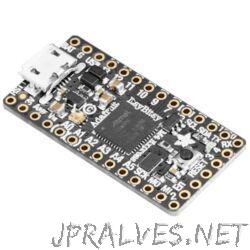Other
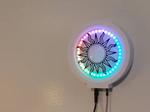
“The wall-mounted light simulates a sunrise 15 minutes before your alarm; so you can wake up to a sunrise any time of day! Story I always say that I’m a morning person in theory. I have had trouble getting …
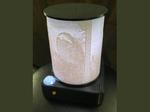
“Create a rotating lithophane lamp that when triggered will play music and LED animations Introduction A lithophane is a translucent, etched object that once back lit will display an image. With 3d printers readily available it is easy to create …
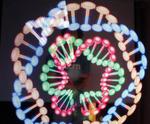
“It is well known that even after a light has been turned off, human eye keeps “seeing” it for a fraction of second. This is known as Persistence of Vision, or POV, and it allows one to “paint” pictures by …
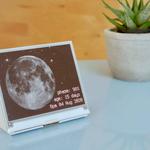
“A battery powered e-ink display showing the current phase of the moon. I’ve used this project as a way to learn. It includes my first custom PCB, one of my first 3D prints, my first encounter with open source …
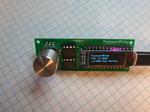
“As promised, this is v2.0 of the PasswordPump, a USB device that manages credentials for up to 250 accounts. Credentials (account names, usernames, passwords, an old password, and categories) are stored ONLY on the device itself, on two removable …

“Whats portable, water resistant and always up for adventure:duck + cyber deck computer = cyberDCK A self-contained computer that can edit and run python files, with USB keyboard input and a display. And its shaped like a duck: a disaster-recovery duck …
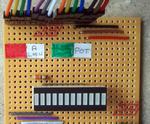
“I saw this LED bar-graph on the Pimoroni site and thought it might be an inexpensive and fun project while undertaking covid-19 lockdown. It contains 24 LEDS, a red and a green, in each of its 12 segments, so in …

“This version of the bee counter is easy to solder and assemble (all through-hole). It’s been tested and works* with sample code provided. The current tested design is easy to program and approachable to beginner programmers. The printed circuit …
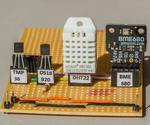
“One of the first sensors that newcomers to physical computing want to try out is something to measure temperature. Four of the most popular sensors are the TMP36, which has analogue output and needs an analogue to digital converter, the …
Project Graphics on a SSD1306 I2C OLED 128x64 Display With CircuitPython Using an Itsybitsy M4 Express
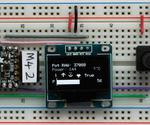
“The SSD1306 OLED display is a small (0.96”), inexpensive, widely available, I2C, monochrome graphical display with 128x64 pixels, which is easily interfaced (only 4 wires) to microprocessor development boards such as a Raspberry Pi, Arduino or Adafruit Itsybitsy M4 …
Project Dual 7-segment Displays Controlled by Potentiometer in CircuitPython - Demonstration of Persistence of Vision
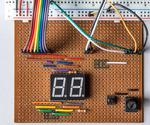
“This project uses a potentiometer to control the display on a couple of 7-segment LED displays (F5161AH). As the potentiometer knob is turned the displayed number changes in the range 0 to 99. Only one LED is lit at any …

“Seven segment displays have been around for more than a century (https://en.wikipedia.org/wiki/Seven-segment_display) and form the familiar shape of the numbers in digital watches, instrument panels and many other numerical displays. They’ve been replaced in …

“In this guide we will create a simple knob sketcher toy using a graphical display and two potentiometers, also known as trim pots or just pots. We’ll go over the basic idea of drawing a pixel to the display …

